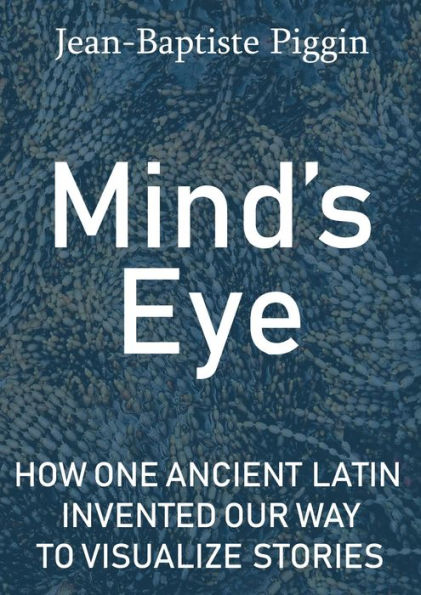When were family-tree diagrams invented? Mind's Eye discovers the progenitor of today's graphic timelines and trees in an ancient three-meter chart of history. Hidden in plain sight, this Roman masterpiece has never been honored at book length before.
The Great Stemma was not only a vast visual abstraction of the march of time from Creation as far as the birth of Jesus Christ, but also marked a swerve in civilization towards exploiting our visual perception as an extra tool for thinking.
Mind's Eye can be read rapidly, by skimming the 117 illustrations and checking out the QR links. Or it can be savored as an 88,000-word narrative in which historian Piggin narrates how he brought this neglected graphic to light.
Medieval Latin copies convey only imperfectly the brilliance of the lost original, which represented the colorful characters of the Tanakh as if they were competing pieces on a game-board. Its ageless design led on to a 16th-century craze for genealogy, a bold remake by artists in China and the graphic principles which we use today to interpret events and stories visually.
When were family-tree diagrams invented? Mind's Eye discovers the progenitor of today's graphic timelines and trees in an ancient three-meter chart of history. Hidden in plain sight, this Roman masterpiece has never been honored at book length before.
The Great Stemma was not only a vast visual abstraction of the march of time from Creation as far as the birth of Jesus Christ, but also marked a swerve in civilization towards exploiting our visual perception as an extra tool for thinking.
Mind's Eye can be read rapidly, by skimming the 117 illustrations and checking out the QR links. Or it can be savored as an 88,000-word narrative in which historian Piggin narrates how he brought this neglected graphic to light.
Medieval Latin copies convey only imperfectly the brilliance of the lost original, which represented the colorful characters of the Tanakh as if they were competing pieces on a game-board. Its ageless design led on to a 16th-century craze for genealogy, a bold remake by artists in China and the graphic principles which we use today to interpret events and stories visually.

Mind's Eye: How One Ancient Latin Invented Our Way to Visualize Stories

Mind's Eye: How One Ancient Latin Invented Our Way to Visualize Stories

Product Details
| BN ID: | 2940156105106 |
|---|---|
| Publisher: | Cernimus |
| Publication date: | 10/31/2018 |
| Sold by: | Draft2Digital |
| Format: | eBook |
| File size: | 1 MB |
